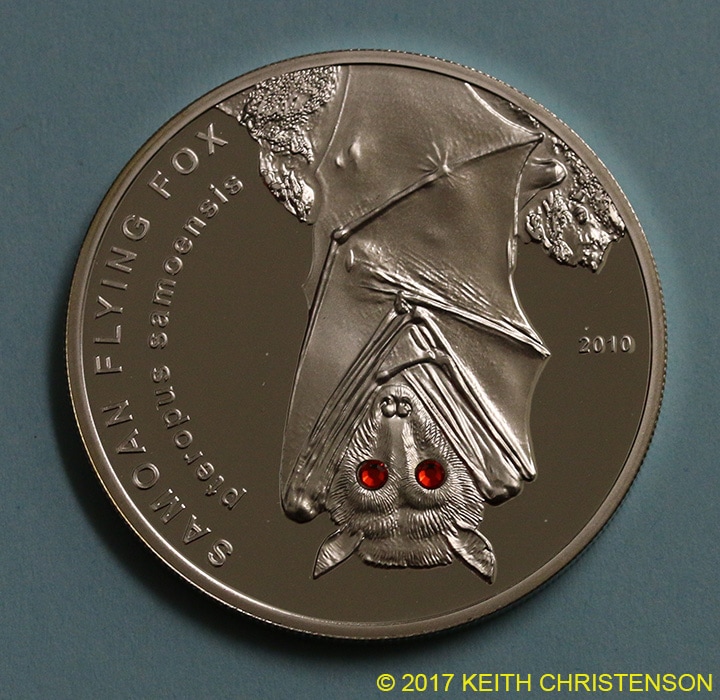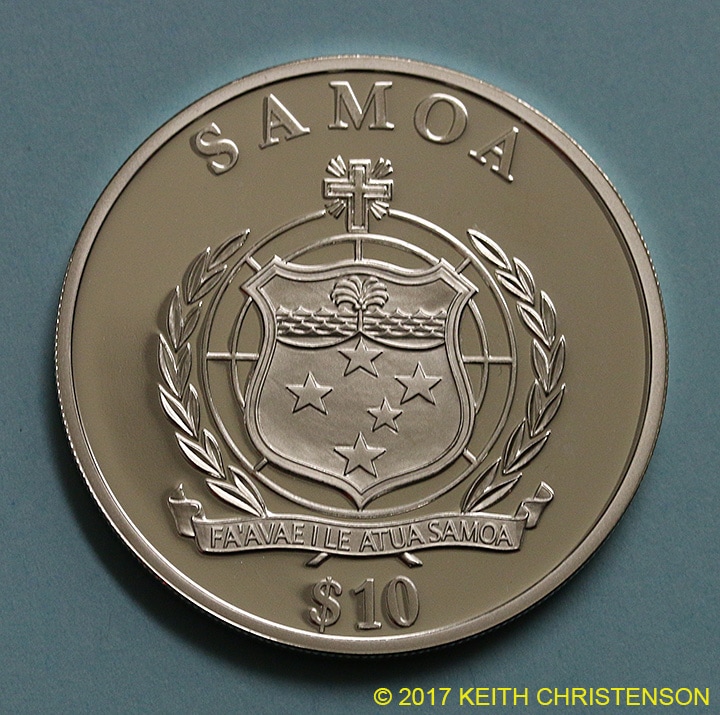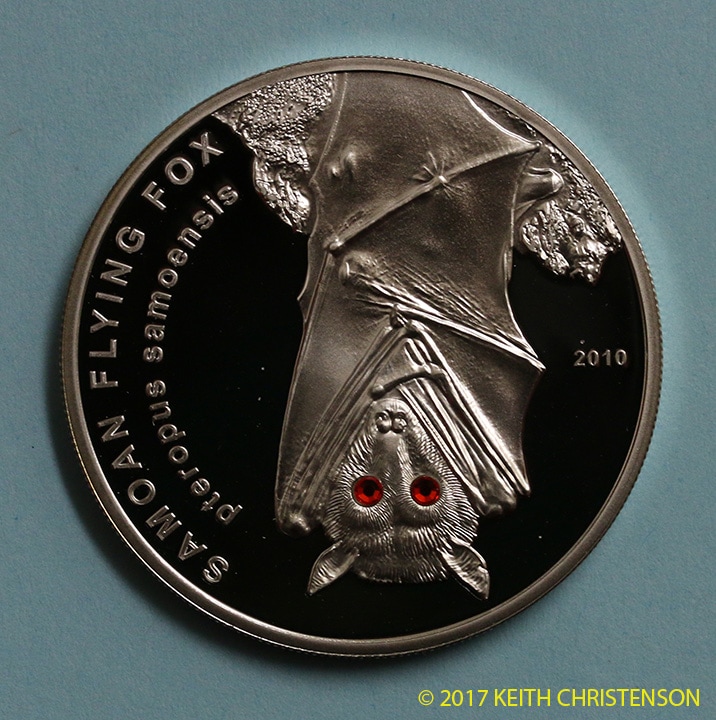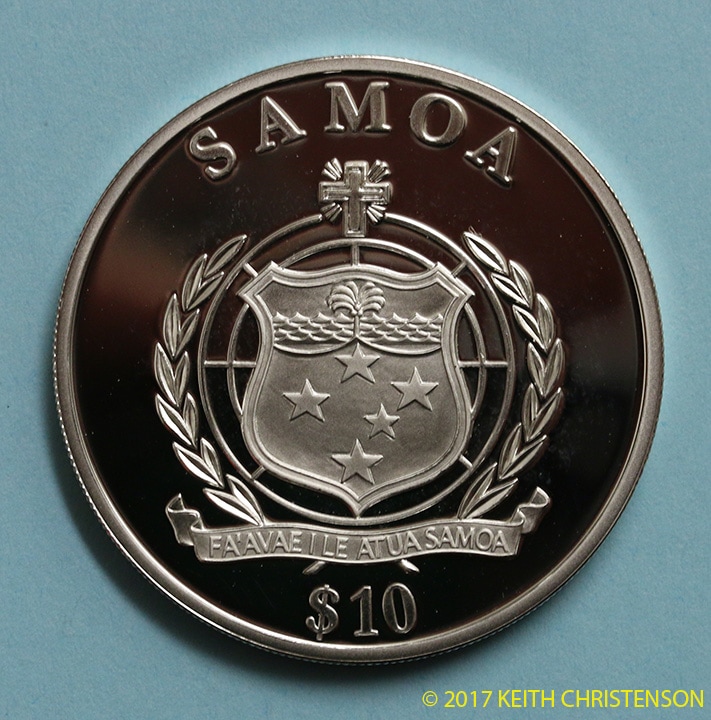This is the 2010 Samoa 10 dollar coin. It is made of 0.925 pure silver and weighs in at a hefty 0.80 ounces (25g). It is a legal tender coin, KM#173 in the catalog of world coins, and exactly no one would ever spend one. Only 2,500 of these were minted and all are proof quality coins, so on the rare end of the scale and oh so good-looking. The eyes, for reasons unknown to me, are inlaid red Swarovski crystals, which give the coin a very unique attribute and fortunately do not end up making the bat look evil. In real life, the bat has brown eyes.
Overall, the bat is locally common, but unlike many flying foxes it roosts mainly alone or in small family groups and the males maintain territories. So it is hard to estimate the population of these bats as there aren't just a few large roosts to visit. And while it is known from the Samoan Islands and also Fiji, the overall trend seems to be that the population is declining due to habitat loss and in part to hunting (although strong conservation efforts have reduced the threat of hunting significantly).
An interesting side note is that Samoa is, or was, home to one of the giant bats. With a wingspan over 5 feet, the Large Samoan Flying Fox was discovered on an expedition in the mid-1800s, but not actually described as a new species until 2009 (from the collected specimen found in a jar at the Smithsonian I believe). It has the Latin name of Pteropus coxi, and is widely considered extinct.
But, since this is a proof issue, it has the fun ability to look different depending on how you light it. So here is the same coin with different lighting to show the mirror-like finish on the flat surfaces and the cameo finish on the raised surfaces.




 RSS Feed
RSS Feed